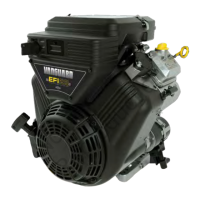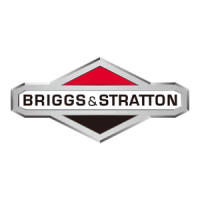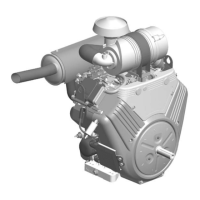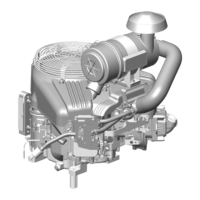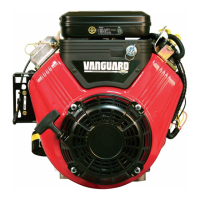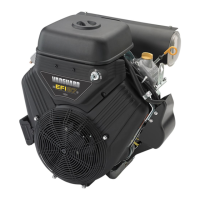Section 1: Diagnostic Introduction 3
On-Board Diagnostic (OBD) System Check
The basic steps of any diagnosis are as follows:
1. Observe the Malfunction Indicator Lamp
(MIL) with engine running. If MIL is illu-
minated, then current Diagnostic Trouble
Codes (DTCs) are present.
2. Read DTC(s) using MIL, Tiny Scan Code
Reader, or Electronic Technician Assistant
(ETA) software.
3. To diagnose system problem(s), proceed to
the applicable Diagnostic Table(s) in Sec-
tion 2: Troubleshooting DTCs.
4. Once the problem is located and corrected
through repair or replacement of faulty
components, clear DTC(s) using the Tiny
Scan Code Reader or the ETA software.
NOTE: For information on the location or
replacement of specifi c components, see
Section 5: Removal/Installation.
5. Start and run engine to validate repairs.
Observe MIL to verify that no DTCs are set.
6. If no DTCs are set, but engine performance
issues exist, see Section 4: Symptoms.
Diagnostic Trouble Codes (DTCs)
The ECM receives voltage signals from as
many as fi ve sensors. Each sensor functions
within an established set of parameters, which
can be viewed as its operating “window.”
When a malfunction or fault condition occurs,
a change in the signal voltage alerts the ECM
that the sensor is functioning outside its op-
erating “window,” a DTC is set and stored in
ECM memory, and the MIL is illuminated.
A default value temporarily replaces the erro-
neous sensor value to restore engine perfor-
mance until the problem is corrected.
Malfunction Indicator Lamp (MIL)
As a bulb and diagnostic system check, the
MIL illuminates at Ignition ON, Engine OFF.
When the engine is started, the MIL is extin-
guished if no current fault condition exists.
If the MIL remains illuminated, it is an indica-
tion that a current DTC is stored. If the fault
should correct itself, as in an intermittent
condition, the MIL is extinguished after a ten
second delay. The DTC remains stored in ECM
memory as a historic code until cleared by
the technician. The MIL does not indicate the
existance of only historic codes.
Data Link Connector (DLC)
The DLC provides for direct communication
with the ECM. By plugging the Tiny Scan Code
Reader or laptop (with ETA software loaded)
into the 6-pin connector in the EFI wire har-
ness, the DTCs stored in ECM memory can be
read and cleared.
Non-Scan Diagnostics
In the Non-Scan diagnostic mode, either the
MIL or the Tiny Scan Code Reader is used to
read DTCs. The technician then refers to the
applicable Diagnostic Table to troubleshoot
the problem. Those tables labeled Non-Scan
Diagnostics must be used, as the data stream
provided by the ECM is not available for analy-
sis.
Scan Diagnostics
In the more sophisticated diagnostic mode,
the ETA software can facilitate the diagnosis of
system problems through an expanded inter-
face with the ECM. Through the use of data
displays and menu selections, the technician
has access to “live” data for analysis.
It is important to note that the software is not a
stand-alone diagnostic tool for resolving DTCs,
but must be used in conjunction with the Diag-
nostic Tables for the most effi cient and effec-
tive diagnosis. Those tables that are applicable
to users with access to the ETA software are
labeled as Scan Diagnostics.
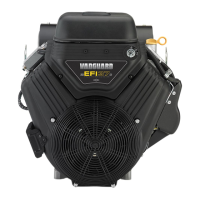
